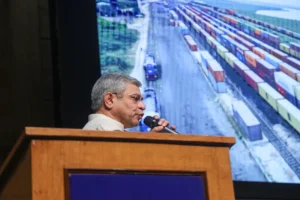
Union Minister of Science and Technology - Jitendra Singh and Chandrayaan-3
Less than 24 hours are left for the launch of Chandrayaan III and the entire nation is really looking forward to the launch. the Chandrayaan-3 mission will be launched on July 14, at 2.35 p.m. This is going to be the third lunar space mission of the Indian Space Research Organisation (ISRO). The last lunar mission – Chandrayan II missed its mark just by a difference of decimals. But this time, it is definitely going to be a hit on the spot. Amidst all this, Union Minister of Science and Technology – Jitendra Singh said that the Chandrayaan-3 mission will turn India into a global player in space technology.
Jitendra Singh highlights the achievement of Indian moon mission
The Union Minister also stated that it was India’s moon mission series that found evidence of water on the Moon. He said, “I am glad to share that 24 hours from now, India will launch its historic Chandrayaan-3. This mission will turn India into a global player in space technology… It was our moon mission series which found evidence of water in space… we might have started late but we will surely be successful…the credit for this goes to PM Modi…”
#WATCH | Hyderabad | I am glad to share that 24 hours from now, India will launch its historic Chandrayaan-3. This mission will turn India into a global player in space technology… It was our moon mission series which found evidence of water in space… we might have started late… pic.twitter.com/5iQsL73CfG
— ANI (@ANI) July 13, 2023
Also read: Chandrayaan III Is Designed On Failure And Not Success Based Approach, Says ISRO Chief
Chandrayaan III designed on failure based approach
Recently, ISRO Chief – S. Somnath revealed that the space mission is designed on a failure-based approach. He said, “…In a nutshell, if you tell what was the problem in Chandrayaan-2, it is simple to say that the ability to handle parameter variation or dispersion was very limited. So, what we did this time is simply expand it further. Look at what are the things that can go wrong. So, instead of a success-based design in Chandrayaan-2, we are doing a failure-based design in Chandrayaan-3. What all can fail, and how to protect it – this is the approach that we have taken…”
To read more such news, download Bharat Express news apps


















